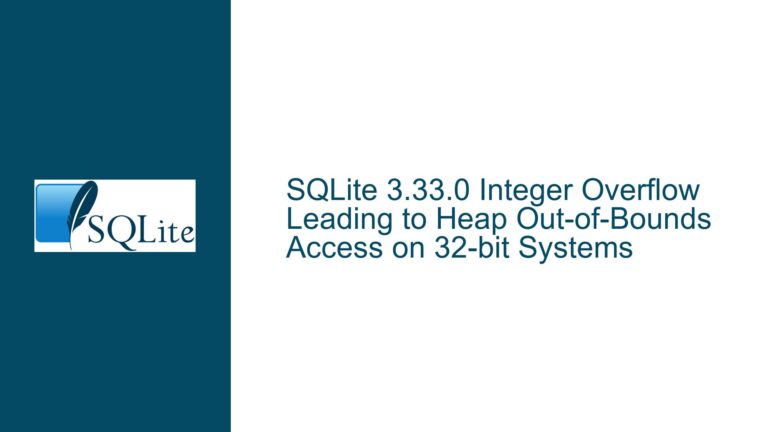Exposing SQLite Session Extension in WASM: Challenges and Solutions
Understanding the SQLite Session Extension and WASM Integration
The SQLite Session Extension is a powerful feature that allows tracking changes to a database, enabling functionalities like conflict resolution and synchronization. When integrating this extension into a WebAssembly (WASM) environment, particularly for use in JavaScript, several technical challenges arise. The primary issue revolves around exposing the session extension’s API to JavaScript through WASM bindings. This involves not only compiling the SQLite source code with the session extension but also ensuring that the necessary functions and data types are accessible from JavaScript.
The session extension introduces 46 new functions and 4 new data types, making it a substantial addition to the SQLite API. The complexity of binding these functions to JavaScript is compounded by the need to handle type conversions between C and JavaScript, especially for functions that take JavaScript callbacks as arguments. Additionally, the size of the resulting WASM file is a concern, as there is a soft limit of 1MB, and the session extension could potentially push the file size over this limit.
Challenges in Binding SQLite Session Extension to JavaScript
One of the main challenges in binding the SQLite Session Extension to JavaScript is the need to convert C function pointers to JavaScript functions and vice versa. This is particularly problematic for functions like sqlite3changeset_apply, which take function pointers as arguments. In the C API, these function pointers expect specific types of arguments, such as C-strings. When these functions are called from JavaScript, the arguments need to be converted from JavaScript types to C types, which is not currently handled automatically by the WASM binding framework.
Another challenge is the sheer size and complexity of the session extension. With 46 new functions and 4 new data types, the effort required to bind all these functions to JavaScript is significant. This includes not only writing the binding code but also ensuring that the bindings are correct and efficient. Furthermore, the session extension is not a commonly used feature, so there is limited prior art or examples to draw from, making the task even more daunting.
The size of the resulting WASM file is also a concern. The current WASM build of SQLite is already over 800KB, and adding the session extension could push it over the 1MB soft limit. This could necessitate creating a separate build for the session extension, which would increase the maintenance burden. Alternatively, the session extension might be excluded from the main WASM build if it adds too much weight, which would limit its availability to users who need it.
Steps to Integrate and Troubleshoot SQLite Session Extension in WASM
To integrate the SQLite Session Extension into a WASM build, the first step is to compile the SQLite source code with the session extension enabled. This involves modifying the build configuration to include the session extension and ensuring that all necessary dependencies are included. Once the session extension is compiled into the WASM build, the next step is to expose the session API to JavaScript.
Exposing the session API to JavaScript requires writing binding code that maps the C functions to JavaScript functions. This involves creating a bridge between the C and JavaScript environments, handling type conversions, and ensuring that the functions are callable from JavaScript. For functions that take JavaScript callbacks as arguments, additional work is needed to convert the JavaScript functions into C function pointers and handle the type conversions for the arguments.
Testing is a critical part of the integration process. The session API is complex, and ensuring that all functions work correctly in the WASM environment requires extensive testing. This includes writing unit tests for each function, testing edge cases, and verifying that the functions behave as expected when called from JavaScript. Given the complexity of the session API, this testing process can be time-consuming and may require significant effort.
If the size of the WASM file becomes an issue, one solution is to create a separate build for the session extension. This would allow users who need the session extension to use it without increasing the size of the main WASM build. However, this approach increases the maintenance burden, as it requires maintaining multiple builds and ensuring that they are kept in sync. Alternatively, the session extension could be excluded from the main WASM build if it adds too much weight, but this would limit its availability to users who need it.
In conclusion, integrating the SQLite Session Extension into a WASM build and exposing it to JavaScript is a complex task that involves several technical challenges. These challenges include handling type conversions between C and JavaScript, binding a large number of functions, and managing the size of the resulting WASM file. By carefully addressing these challenges and following a systematic approach to integration and testing, it is possible to successfully expose the SQLite Session Extension in a WASM environment.






